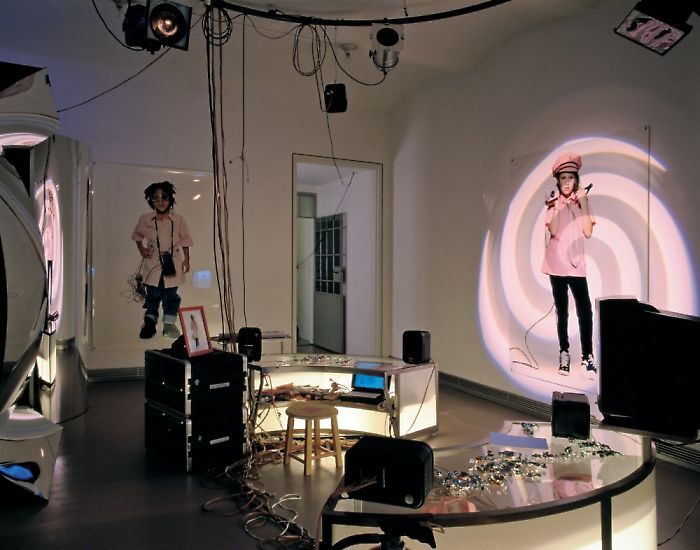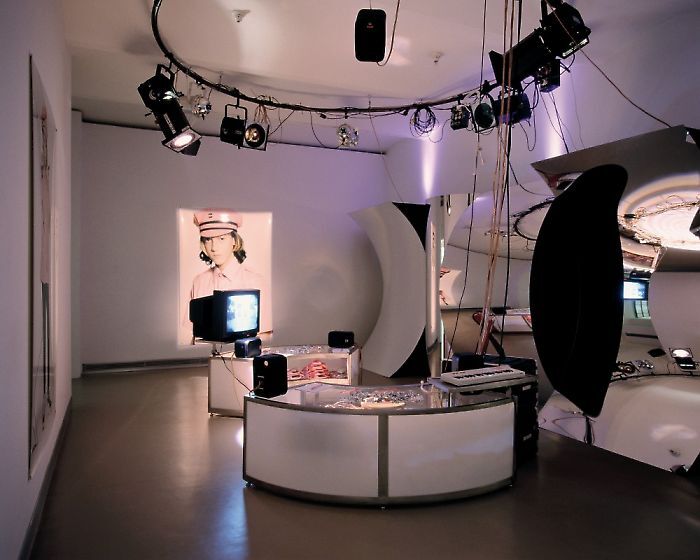—
Julia Scher
Wonderland
[…] It is apt that Julia Scher, whose art considers the attractions and repulsions of scopophilia and the ever-increasing amount of surveillance that society is subject to, should take on the subject of the most over-observed of little girls. […] There is a trenchant wit at work in this Wonderland, one that shifts the focus from the titillations of pseudonymous photographer Lewis Carroll onto the brilliant logic and language games of Charles Dodgson (1), whose intellect and playfulness imbue this […] installation.
“Alice” here is represented by three large C-prints of epicene boys and girls in cloying pink uniforms. The vigilant, watchful children surround the viewer on three sides, staring calmly from the walls, comfortably holding video cameras and other electronica. They preside over a complicated central nervous system of computer cables and wires and feeds that snake around the floors and ceiling of the gallery, here and there bundled together by fragile fabric bows. Rather than creating yet another contemporary spectacle of trampled innocence, Scher presents these children as mischievous museum curators who simultaneously collect, record, and reclassify the objects of Wonderland.
Scher’s costuming of the children in the photos in identical pink uniform suggests that children are imprisoned in manufactured adult notions of “innocence” and childhood identity. The actual hats and shirts that were worn by the children lie neatly folded and abandoned near the computers that form a circular lagoon in the middle of the room. It’s as if the enforced identity has been discarded at the edge of the information pool, the way children once would have abandoned their clothing when taking a dip in the local swimming hole.
Through her use of surveillance cameras and the Web, Scher examines how the fluid nature of identity in the original Alice story mirrors the protean quality of personality in the information age. Charles Dodgson created a universe where growing from a child into an adult could be transposed, an invention that reflects his desire that little girls, rather than becoming adult and complicated by sexuality, forever inhabit the landscape of childhood. Scher’s examinations of identity on-line have led her to discover that “identity can be defined by the user. I can be a teenage boy mimic and behave like one, I can be in constant morph.” […]
(1) Charles Lutwidge Dodgson (January 27, 1832 – January 14, 1898), better known by the pen name Lewis Carroll, was a British author, mathematician, logician, Anglican clergyman and photographer. One of his most famous writings was Alice's Adventures in Wonderland.
Theresa Duncan, “Julia Scher’s Wonderland,” in: Artbyte, October/November 1998, pp. 40.
Inquiry
Please leave your message below.



